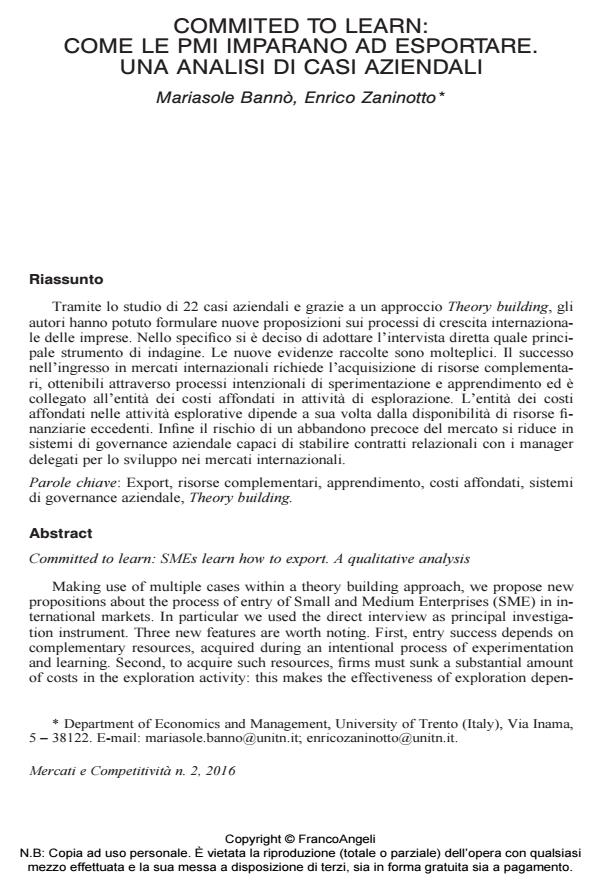Committed to learn: SMEs learn how to export. A qualitative analysis
Journal title MERCATI & COMPETITIVITÀ
Author/s Mariasole Bannò, Enrico Zaninotto
Publishing Year 2016 Issue 2016/2
Language Italian Pages 29 P. 113-141 File size 509 KB
DOI 10.3280/MC2016-002007
DOI is like a bar code for intellectual property: to have more infomation
click here
Below, you can see the article first page
If you want to buy this article in PDF format, you can do it, following the instructions to buy download credits

FrancoAngeli is member of Publishers International Linking Association, Inc (PILA), a not-for-profit association which run the CrossRef service enabling links to and from online scholarly content.
Making use of multiple cases within a theory building approach, we propose new propositions about the process of entry of Small and Medium Enterprises (SME) in international markets. In particular we used the direct interview as principal investigation instrument. Three new features are worth noting. First, entry success depends on complementary resources, acquired during an intentional process of experimentation and learning. Second, to acquire such resources, firms must sunk a substantial amount of costs in the exploration activity: this makes the effectiveness of exploration depen dent on the availability of free cash flow. Finally, firms have to face the risk of early leaving, due to the difficulty to interpret market signals. This risk is reduced when firms establish relational contracts with managers delegated to international expansion.
Keywords: Export, complementary resources, learning, sunk cost, governance, theory building.
Mariasole Bannò, Enrico Zaninotto, Commited to learn: come le pmi imparano ad esportare. una analisi di casi aziendali in "MERCATI & COMPETITIVITÀ" 2/2016, pp 113-141, DOI: 10.3280/MC2016-002007